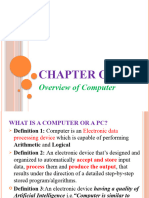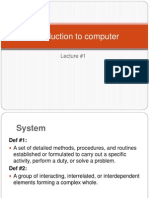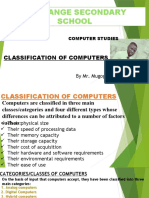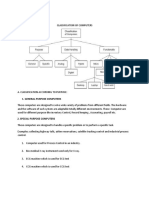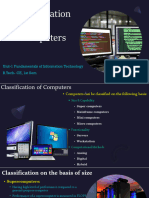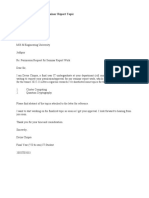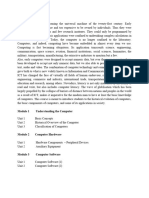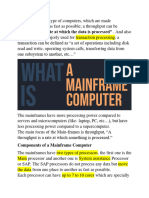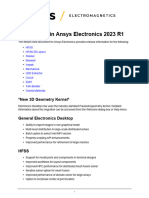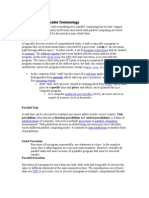0% found this document useful (0 votes)
169 views5 pagesLesson 4 Computer and Its Classifications
There are several ways to classify computers according to their functionality and size. Analog computers use continuous physical phenomena like electrical signals to model problems, while digital computers perform calculations using binary digits. Hybrid computers can process both analog and digital inputs and outputs. Supercomputers are the most powerful and expensive, used for intensive calculations. Mainframes can support hundreds of users simultaneously. Mini computers are mid-sized, supporting 4-200 users. Microcomputers include desktops, laptops, and palmtops. Workstations are user machines in a network. All computers receive input, process information, produce output, and store information according to programmed instructions.
Uploaded by
NathalieCopyright
© © All Rights Reserved
We take content rights seriously. If you suspect this is your content, claim it here.
Available Formats
Download as PDF, TXT or read online on Scribd
0% found this document useful (0 votes)
169 views5 pagesLesson 4 Computer and Its Classifications
There are several ways to classify computers according to their functionality and size. Analog computers use continuous physical phenomena like electrical signals to model problems, while digital computers perform calculations using binary digits. Hybrid computers can process both analog and digital inputs and outputs. Supercomputers are the most powerful and expensive, used for intensive calculations. Mainframes can support hundreds of users simultaneously. Mini computers are mid-sized, supporting 4-200 users. Microcomputers include desktops, laptops, and palmtops. Workstations are user machines in a network. All computers receive input, process information, produce output, and store information according to programmed instructions.
Uploaded by
NathalieCopyright
© © All Rights Reserved
We take content rights seriously. If you suspect this is your content, claim it here.
Available Formats
Download as PDF, TXT or read online on Scribd
/ 5



